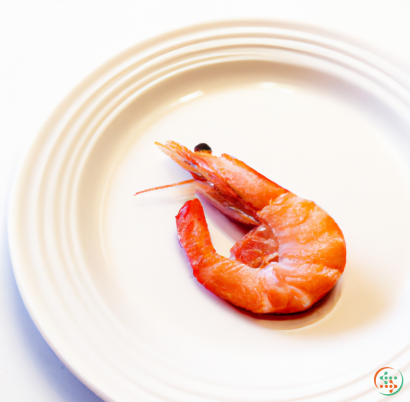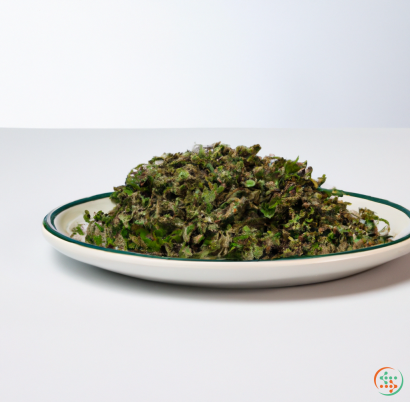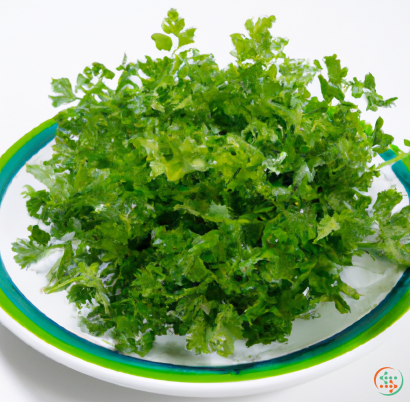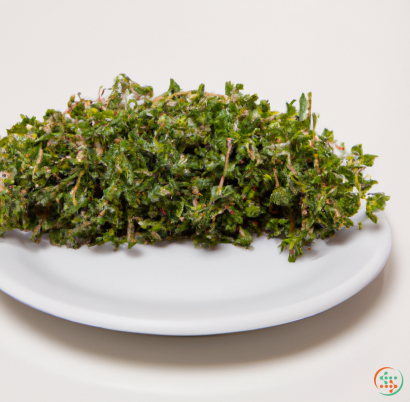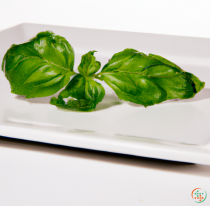Oregano
What is Oregano?
Oregano is a flavorful and aromatic herb that has been used in cooking, medicine and various other forms throughout history. It is native to the Mediterranean and is related to marjoram, thyme, and basil. Oregano has a pungent aroma and pungent taste with a hint of sweetness, as well as a slight bitterness. As a medicinal herb, it has been used to treat many ailments over the centuries, including colds, flu, stomach aches and even headaches.
The word oregano comes from the Greek “oros” meaning mountain and “ganos” which means joy or delight. A common nickname for the herb is “the joy of the mountains”, which certainly encompasses its many aromatic uses.
Oregano is an herb from the mint family and has a number of different varieties that range from sweet to pungent to spicy. It is an evergreen shrub with small, slightly curved, grayish-green leaves that range from 1 to 2 inches in length. Oregano is used in many dishes, and in each region it appears in it takes on its own unique flavor.
How to Grow Oregano
Growing oregano is relatively easy and can be done in both backyard gardens and window boxes. It prefers cool, dry environments with rich soil, plenty of sunlight, and good drainage. If you are planting oregano outdoors, sow the seeds in the spring, approximately 6 weeks before the final frost. To grow oregano indoors, start the seeds in a seed tray filled with starter mix and let them germinate for two weeks before transplanting them in small pots filled with the same soil - keep soil moist but not wet. Place the pots in an area with plenty of sun and make sure the temperature stays between 60 to 70°F.
Harvesting Oregano
When it is time to harvest oregano, cut the stems above a set of leaves and hang them upside down in a dark, well-ventilated area for several days in order for the leaves to fully dry. When the leaves are crispy, strip them off the stems and store in an airtight container for up to one year.
Cooking with Oregano
One of the most common uses for oregano is in Italian cuisine, where it is used in marinara sauce, pizza, pasta dishes and more. In Turkish and Greek cuisines, it is a popular choice in stews, lemon potatoes, and soups. Additionally, it can be added to roasted vegetables, sprinkled over pizza or mixed into Greek salads.
In a more medicinal sense, oregano can be used in teas and tinctures to treat colds, flu, sinus infections and sore throat. It contains compounds like thymol, carvacrol and terpenes, which have anti-inflammatory and anti-bacterial properties.
Conclusion
As you can see, oregano is a versatile herb with multiple culinary and medicinal benefits. It is useful in a wide variety of cuisines and can be grown at home without too much difficulty. Oregano has a unique flavor, aroma and taste, making it suitable for a variety of dishes. Whether for its health benefits or its culinary uses, oregano is certainly an invaluable herb worthy of your garden or kitchen.
Oregano is a flavorful herb with a host of culinary and medicinal uses. It is grown in gardens around the world and is a key ingredient in many of our favorite recipes. But how does it get from the field to the dinner plate and what happens along the way? This post will explore the journey of oregano, from seed to savory seasoning.
The Life Cycle of Oregano
Before anything else, we’ll need to understand the lifecycle of oregano. First, the seed phase. The seeds of this plant are often scattered or planted in the spring. During this stage, the seeds are exposed to light, moisture, and temperature, all of which must be just right for the seeds to germinate. If these conditions are met, small plants will eventually sprout from the soil. Next up is the vegetative phase. This phase consists of the bright green stages of adolescent oregano. The leaves will gradually start to dip down in size and the stems and stalks will grow more robust. Finally, the flowering phase. During this stage, the oregano will produce delicate white, purple, or pink flowers in the center of its foliage.
Harvesting Oregano
Once the oregano has reached the flowering phase, it is time to harvest. Oregano is best harvested when the flowers have started to bloom but the leaves are still tender. When harvesting by hand, care should be taken not to disturb the delicate growing stems or roots. If done correctly, the oregano should stay healthy enough that it can be replanted.
If the oregano plant is being harvested to be processed and shipped, it is done slightly differently. Here, the whole plant is gathered together and cut off at the base. This allows the oregano to be put into trays or bags and shipped off. The harvested plants are then ready to be dried and processed.
Drying Oregano
The reason for drying oregano is to transform the fresh leaves into a shelf-stable product that can be stored for up to several years without losing flavor or aroma. To dry oregano, the leaves are separated from the stems and left to hang, either in bunches or spread out on screens and trays. The trays and screens are then placed in warm, dry, and sometimes humid places, such as a greenhouse or solar dryer. This helps the oregano reach its ideal moisture content, usually less than 10% depending on the intended use.
Once the oregano has reached the desired moisture content, it is ready to be processed. Again, there are different ways to do this. If the oregano is to remain in leaves, then it is simply cut or crumbled and then put into airtight containers. But if it is to be ground into a powder, then it can be done either by hand or with a commercial grinder. The powder can then be stored in a sealed container in a cool, dry place.
Packaging Oregano
Finally, the oregano is ready to be packed and shipped. Oregano is typically packaged in food-safe bags, jars, boxes, or bottles. Depending on where the oregano is going and how it will be used, the packaging can vary. For example, if it is for retail sale, then the packaging will likely be more decorative and more attention to detail will be paid to the labeling. If the oregano is for food production, then it may be sealed in more industrial-looking bags and labeled with the relevant information.
Getting Oregano to the Dinner Table
Once the oregano is packed, it is ready to be shipped out to be used in various kitchens and restaurants. If the oregano is to be used in a restaurant, then it is likely to be freshly chopped, or even poured directly onto the dish. But often, the oregano will be bought in bulk form, either in leaves or powder, and stored in a pantry or spice rack until needed.
It is up to the chef or home cook to decide how to use the oregano. It can be used fresh onto dishes or cooked in sauces, stews, or casseroles. It can also be added to a variety of dishes from salads to main courses. Or it can be used to season pizza, pasta, or fish. Oregano has numerous uses in the kitchen, and its versatility helps explain why it remains one of the most popular herbs.
Final Thoughts
As we can see, oregano’s journey from the field to the dinner plate is quite complex. From the initial germination of the seeds to the careful harvesting and drying of the leaves, to the packaging and shipping, each step of the journey plays an essential role. While it’s impossible to summarize the entire process in one post, hopefully, this insightful overview has given you a better understanding of the path followed by this versatile herb.
| Vitamin A | 0.085 mg | |
| Beta-Carotene | 0.001007 grams | |
| Alpha-Carotene | 0.02 mg | |
| Vitamin E | 0.01826 grams | |
| Vitamin K | 0.6217 mg | |
| Vitamin C | 0.0023 grams | |
| Vitamin B1 | 0.18 mg | |
| Vitamin B2 | 0.53 mg | |
| Vitamin B3 | 0.00464 grams | |
| Vitamin B4 | 0.0323 grams | |
| Vitamin B5 | 0.92 mg | |
| Vitamin B6 | 0.00104 grams | |
| Vitamin B9 | 0.237 mg |
| Calcium | 1.597 grams |
Daily Value 1.3 g
|
| Iron | 0.0368 grams |
Daily Value 0.018 g
|
| Magnesium | 0.27 grams |
Daily Value 0.4 g
|
| Phosphorus | 0.148 grams |
Daily Value 1.25 g
|
| Potassium | 1.26 grams |
Daily Value 4.7 g
|
| Sodium | 0.025 grams |
Daily Value 2.3 g
|
| Zinc | 0.00269 grams |
Daily Value 0.011 g
|
| Copper | 0.63 mg |
Daily Value 0.9 mg
|
| Manganese | 0.00499 grams |
Daily Value 0.0023 g
|
| Selenium | 0.0045 mg |
Daily Value 0.055 mg
|
| Tryptophan | 0.203 grams | |
| Threonine | 0.322 grams | |
| Isoleucine | 0.441 grams | |
| Leucine | 0.78 grams | |
| Lysine | 0.5 grams | |
| Methionine | 0.127 grams | |
| Cystine | 0.11 grams | |
| Phenylalanine | 0.449 grams | |
| Tyrosine | 0.297 grams | |
| Valine | 0.585 grams | |
| Arginine | 0.449 grams | |
| Histidine | 0.144 grams | |
| Alanine | 0.5 grams | |
| Aspartic Acid | 1.009 grams | |
| Glutamic Acid | 0.975 grams | |
| Glycine | 0.517 grams | |
| Proline | 1.712 grams | |
| Serine | 0.314 grams |
| Galactose | 0.15 grams |
|
| Glucose | 1.9 grams |
|
| Fructose | 1.13 grams |
|
| Sucrose | 0.91 grams |
|
| Total Sugars | 4.1 grams |
per 100g
|
| Lauric acid (12:0) | 0.25 grams |
|
| Palmitic acid (16:0) | 0.79 grams |
|
| Stearic acid (18:0) | 0.51 grams |
|
| Total Saturated fatty acids: | 1.55 g | |
| Oleic acid (18:1) | 0.71 grams |
|
| Total Monounsaturated fatty acids: | 0.71 g | |
| Omega-3 Alpha-linolenic acid (18:3) | 0.62 grams |
|
| Linolenic acid (18:3) | 0.62 grams |
|
| Linoleic acid (18:2) | 0.75 grams |
|
| Total Polyunsaturated fatty acids: | 1.99 g | |
| Phytosterols | 0.2 grams |
|
| Total Sterols: | 0.2 g | |

